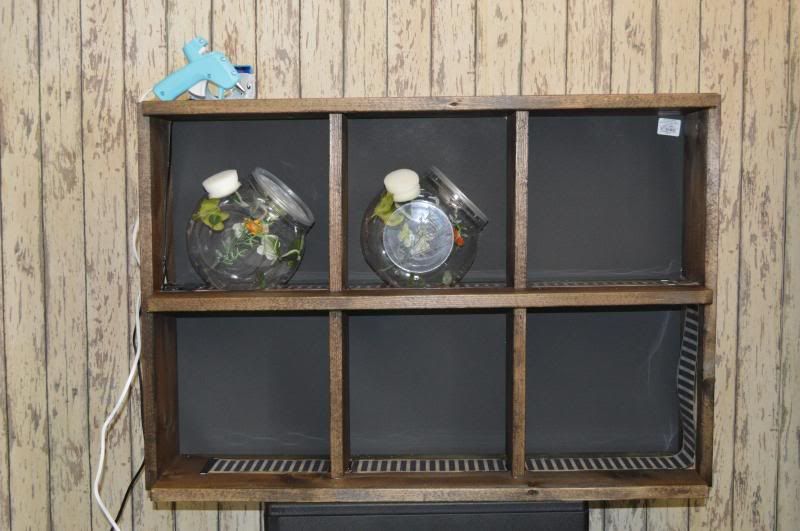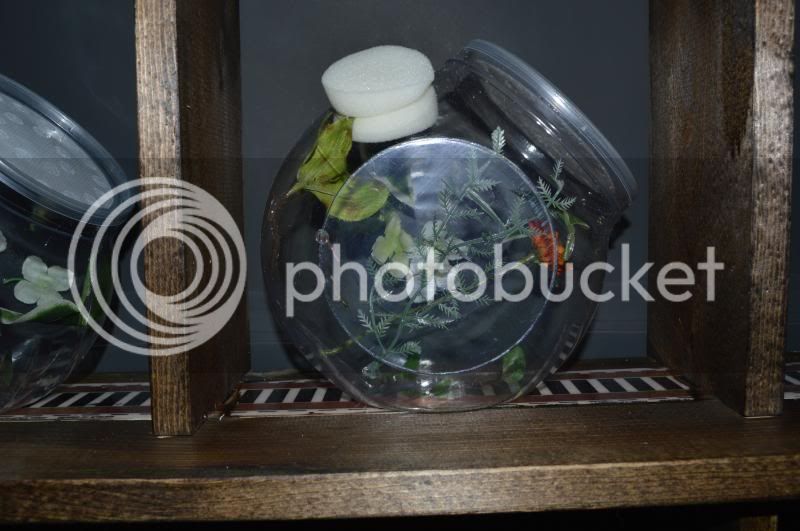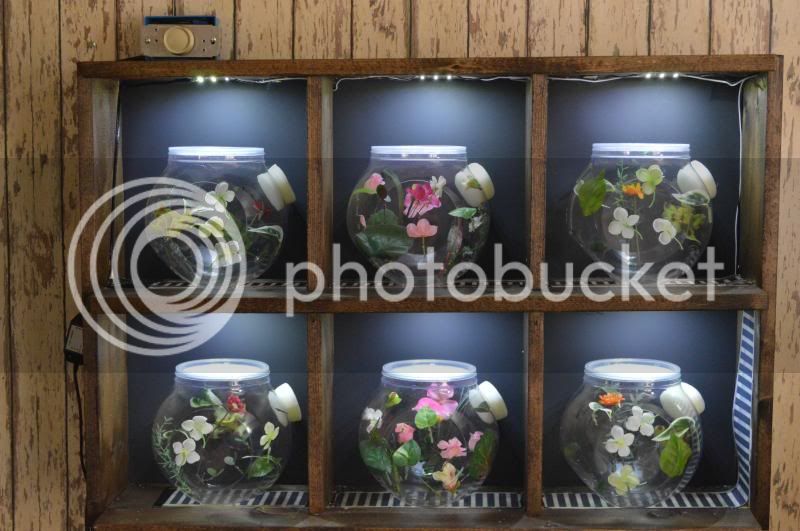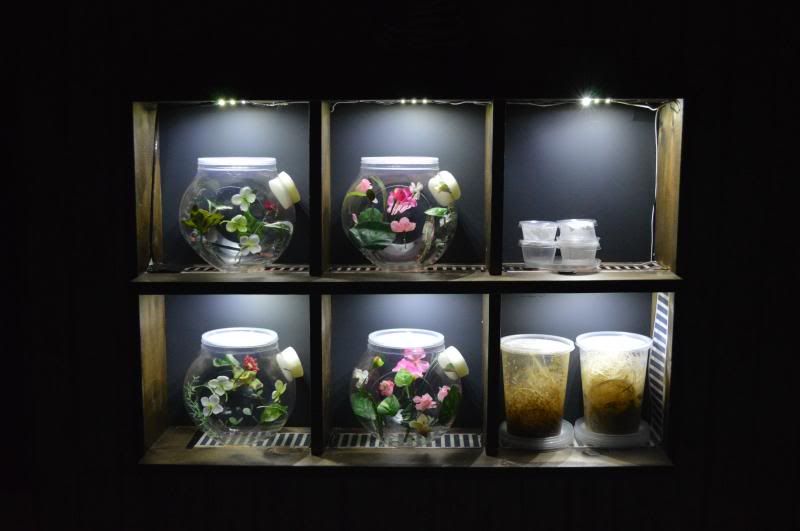Plastic enclosures heated by flexwatt tape have a long history of safety and effectiveness in the reptile and insect/arachnid hobbies, on what are your claims of "toxins" based?
Chemistry class, research, informational sheets and sites, health studies, etc. Just search "chemicals released by plastic" into your favorite search engine, and you'll be shocked. If you need more proof than what I have listed below, it can easily be obtained.
Below I have listed studies and articles relevent to chemicals being released plastic:
A summary: Plastic products are releasing chemicals from the time that they are produced. Among the 47 chemical plants ranked highest in carcinogenic emissions by the U.S. Environmental Protection Agency (EPA), 35 are involved in plastic production. Toxic chemicals are used just to produce to plastic included: trichloroethane, acetone, methylene chloride, methyl ethyl ketone, styrene, toluene, benzene and 1,1,1 trichloroethane. Sulfur oxides, nitrous oxides, ethylene oxide, methanol, and other volatile organic compounds are released from plastic production. Though some plastic products are being labeled as "BPA free," other chemicals with less-known effects are replacing them. A study by NPR (cited below) found and stated that "
more than 70 percent of the products released chemicals that acted like estrogen. And that was before they exposed the stuff to real-world conditions: simulated sunlight, dishwashing and microwaving."
SOURCES studies, articles:
- "Most plastic products, from sippy cups to food wraps, can release chemicals that act like the sex hormone estrogen, according to a study in Environmental Health Perspectives. The study found these chemicals even in products that didn't contain BPA, a compound in certain plastics that's been widely criticized because it mimics estrogen. PlastiPure manufactures water bottles that it says have no estrogenic chemicals. Many plastic products are now marketed as BPA-free, and manufacturers have begun substituting other chemicals whose effects aren't as well known. But it's still unclear whether people are being harmed by BPA or any other so-called estrogenic chemicals in plastics. Most studies of health effects have been done in mice and rats. [...] The testing showed that more than 70 percent of the products released chemicals that acted like estrogen. And that was before they exposed the stuff to real-world conditions: simulated sunlight, dishwashing and microwaving, Bittner says.- Study done by NPR http://www.npr.org/2011/03/02/134196209/study-most-plastics-leach-hormone-like-chemicals
Hamilton, Jon. "Study: Most Plastics Leach Hormone-Like Chemicals."
NPR. Public Broadcasting System (PBS), 2 Mar. 2011. Web. 24 Mar. 2013.
http://www.npr.org/2011/03/02/134196209/study-most-plastics-leach-hormone-like-chemicals.
- Plastic Bottles Release Potentially Harmful Chemicals (Bisphenol A) After Contact With Hot Liquids http://www.sciencedaily.com/releases/2008/01/080130092108.htm
- Study by PMC, US National Library of Medicine, National Institutes of Health. "Most Plastic Products Release Estrogenic Chemicals: A Potential Health Problem That Can Be Solved" http://www.ncbi.nlm.nih.gov/pmc/articles/PMC3222987/
- Article/Study by GreenBiz "BPA-Free Plastic May Release Chemicals with Estrogenic Activity" http://www.greenbiz.com/news/2011/03/03/bpa-free-plastics-release-chemicals-estrogenic-activity
- Study by Rodale - where health meet life. "Study: All Plastics Are Bad for Your Body" http://www.rodale.com/chemicals-plastic
- "Plastics are essentially a byproduct of petroleum refining – and, of course, petroleum is a non-renewable and rapidly declining resource. The components of oil or natural gas are heated in a “cracking” process, yielding hydrocarbon monomers that are then chemically bonded into polymers, which are long-chain molecules. Different combinations of monomers produce polymers with different characteristics. Additionally, various chemicals such as plasticizers, antioxidants, anti-static agents, colorants, flame retardants, heat stabilizers and barrier resins are added to give plastic products their performance properties.Among the 47 chemical plants ranked highest in carcinogenic emissions by the U.S. Environmental Protection Agency (EPA), 35 are involved in plastic production.
Significant releases of toxic chemicals included trichloroethane, acetone, methylene chloride, methyl ethyl ketone, styrene, toluene, benzene and 1,1,1 trichloroethane. Other major emissions from plastic production processes include sulfur oxides, nitrous oxides, ethylene oxide, methanol, and other volatile organic compounds.
Dioxins, which are highly toxic even at low doses, are produced when plastics are manufactured or incinerated. While dioxin levels in the environment have been declining for the last 30 years, they break down so slowly that some of the dioxins from past releases will still be in the environment for many years to come.
The Berkeley Plastics Task Force says that although the refining process uses waste minimization methods, air emissions are still high because of inherent difficulties in handling large flows of pressurized gases.
Manufacturing PET resin generates more toxic emissions (nickel, ethylbenzene, ethylene oxide, benzene) than manufacturing glass. Producing a PET bottle generates more than 100 times the toxic emissions to air and water than making the same size bottle out of glass, according to the Berkeley Plastics Task Force.
PVC is another type of plastic that presents notorious environmental problems. Its manufacture involves the use of hazardous raw materials, including the basic building block of plastic, vinyl chloride monomer (VCM), which is explosive, highly toxic and carcinogenic. PVC production facilities have a long history of generating complex and hazardous chlorinated wastes, some of which are inevitably released into the surrounding environment.
Health Issues
People are exposed to these chemicals not only from the manufacturing process, but also by using products made from plastic, by eating food contained in plastic packaging and even by breathing them as they off-gas in the indoor environment.
One substance of concern is Bisphenol-A (BPA), an endocrine disruptor that has been widely used in polycarbonate products like food containers, water bottles, baby bottles, eyeglass lenses, nail polish, dental sealants, water pipes and the plastic lining of food cans. (Some plastics bearing the numbers 03 and 07 - see chart above - have been found to leach BPA.) Endocrine disruptors behave like the hormones estrogen and androgen and could wreak havoc on the body’s endocrine system. The National Clearinghouse for Worker Safety and Training reported in its newsletter in 2000 that University of Missouri researchers found that extremely low amounts – 100,000 times smaller than thought – of BPA causes reproductive problems in mice.
Earlier this year, researchers at the University of Cincinnati announced in the journal Toxicology Letters that when polycarbonate bottles were exposed to boiling water, BPA was released 55 times more rapidly than when exposed to cold water. That finding had huge implications, given the widespread use of this plastic for baby bottles, which are regularly boiled for sterilization purposes."
Article by Natural Life: "Eliminating Plastic From Our Lives" http://www.naturallifemagazine.com/0806/asknl.htm
-This information has been compiled by ScienceGirl, the summary is original work that compiles the information found in the above cited studies and articles.-
















